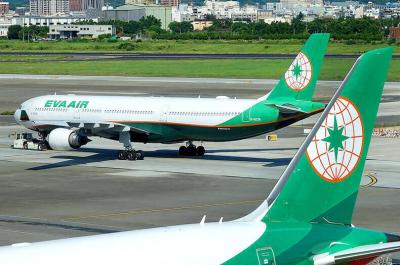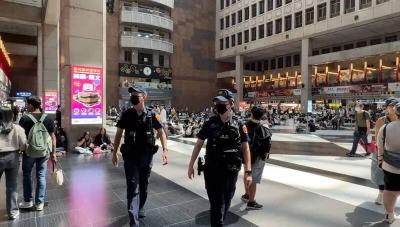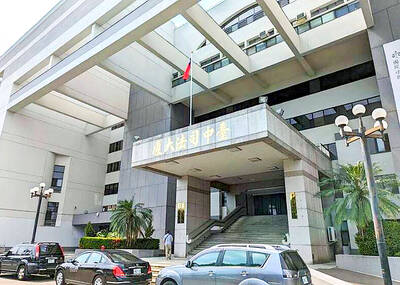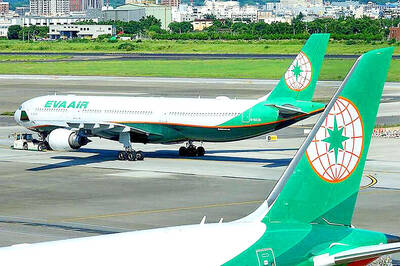It was supposed to be one of southern Taiwan’s most ambitious building projects in years, a defining NT$6 billion (US$189 million) world-class museum that promised stunning modern architecture, storing tens of thousands of rare antique works of art and ancient treasures from throughout Asia.
Nearly a decade since it was first announced, Paul Fehlau, an executive senior associate at US-based Antoine Predock Architect (APA) and one of the former lead architects of the museum — the first branch of the National Palace Museum (NPM) outside Taipei — says it may never be completed.
“Looking back at the entire proposal, I’m not sure I can say that whether I really had the feeling that they were going to finish it,” he told the Taipei Times, referring to the museum’s administration.
“The main problem was a fundamental lack of attention in the project, a lack of belief in trying to get it finished,” he said. “Had they really wanted to get it finished, they would have finished it [long before].”
APA, a rapidly growing firm recently rated by Architectural Digest as one of the top 20 global designers, was selected from a field of six finalists as part of an international architectural contest for the project, first made public in 2001.
At the time, the firm said the mountain-shaped design would be an “approachable, celebratory community center, a fluid, living scroll, that is woven and read, felt and lived, as it travels back in time, spiraling and unfolding toward contemporary Taiwan and the future.”
However, fast-forward nine years and two project deadlines later and the 70 hectare site, located minutes from Chiayi High Speed Rail Station, remains nearly empty. It was recently revealed that the museum would now be pushed back to a 2017 opening, breaking a promise by President Ma Ying-jeou (馬英九) late last year for a spring 2012 opening, infuriating both county officials and tourism operators.
Last month, National Palace Museum Director Chou Kung-shin (周�? told the Taipei Times the delay resulted from problems with flooding in the area, as well as unresolved problems, including that the design was over budget with its two major contractors, APA and Lord Cultural Resources, one of the world’s largest museum management firms.
Both firms have filed lawsuits against the central government, accusing it of breaching the original contract.
Fehlau, who says the NPM southern branch was one of their first forays in Asia and the reason it entered the Taiwanese market, tells a different story. From the onset, he said, the NPM was never fully committed to the project, which was fraught with bureaucratic and budgetary delays.
“You know, they really only got serious about the project when the elections were coming up. That’s the thing that pushed it forward at each stage,” he said.
The lack of will also meant that the design firm was sporadically paid and later prevented from dealing directly with museum officials. Fehlau said that at one point the design firm was not paid for a full two years, while meetings with top museum officials were rebuffed and referred to another engineering subcontractor.
While the NPM claimed that the APA design exceeded its NT$3 billion budget for constructing the main building and that the firm refused requests for a revision, Fehlau said the NPM failed to provide a budget estimate until late in the design phase and refused to provide them with other essential data.
“During the time that we were working on this museum, we created an abundance of [buildings] around the world, and so it’s not that we don’t know how to do projects,” he said.
“The NPM is trying to make it sound like the [budget problems] were a fundamental issue, but they were really not,” he said. “They tell you how much money they have to spend and they figure out the costs and we work together to make the thing work, but you need a team approach to do this.”
Instead, he said that throughout the five years that his firm worked on the project, the NPM changed director three times. Each director saw the project differently, committed to different building budgets and imposed more restrictions on the subcontractors working on the new building. NPM officials walked out of a meeting in February 2008, he said, because they refused to make a decision on whether to build base isolation — an important measure against earthquake damage.
“I think we were just stunned. It just didn’t make any sense. Our structural engineer flew in from [the US] to give the presentation and they decided they just didn’t want to see this. They said that we could just give it to another [subcontractor],” he said
“They couldn’t decide on whether to commit to the [proposal], so they just kept it pending there. You as an architect can’t make this decision for your client,” he said.
APA left the project nine months later. Asked whether the firm would consider returning to the project — which still has its winning design listed on the NPM southern branch Web site — Fehlau did not give a definite answer.

EVA Airways today confirmed the death of a flight attendant on Saturday upon their return to Taiwan and said an internal investigation has been launched, as criticism mounted over a social media post accusing the airline of failing to offer sufficient employee protections. According to the post, the flight attendant complained of feeling sick on board a flight, but was unable to take sick leave or access medical care. The crew member allegedly did not receive assistance from the chief purser, who failed to heed their requests for medical attention or call an ambulance once the flight landed, the post said. As sick

A drunk woman was sexually assaulted inside a crowded concourse of Taipei Railway Station on Thursday last week before a foreign tourist notified police, leading to calls for better education on bystander intervention and review of security infrastructure. The man, surnamed Chiu (邱), was taken into custody on charges of sexual assault, taking advantage of the woman’s condition and public indecency. Police discovered that Chiu was a fugitive with prior convictions for vehicle theft. He has been taken into custody and is to complete his unserved six-month sentence, police said. On Thursday last week, Chiu was seen wearing a white

The Taichung District Court yesterday confirmed its final ruling that the marriage between teenage heir Lai (賴) and a man surnamed Hsia (夏) was legally invalid, preventing Hsia from inheriting Lai’s NT$500 million (US$16.37 million) estate. The court confirmed that Hsia chose not to appeal the civil judgement after the court handed down its ruling in June, making the decision final. In the June ruling, the court said that Lai, 18, and Hsia, 26, showed “no mutual admiration before the marriage” and that their interactions were “distant and unfamiliar.” The judge concluded that the couple lacked the “true intention of

EVA Airways, one of the leading international carriers in Taiwan, yesterday said that it was investigating reports that a cabin crew manager had ignored the condition of a sick flight attendant, who died on Saturday. The airline made the statement in response to a post circulating on social media that said that the flight attendant on an outbound flight was feeling sick and notified the cabin crew manager. Although the flight attendant grew increasingly ill on the return flight, the manager did not contact Medlink — a system that connects the aircraft to doctors on the ground for treatment advice during medical